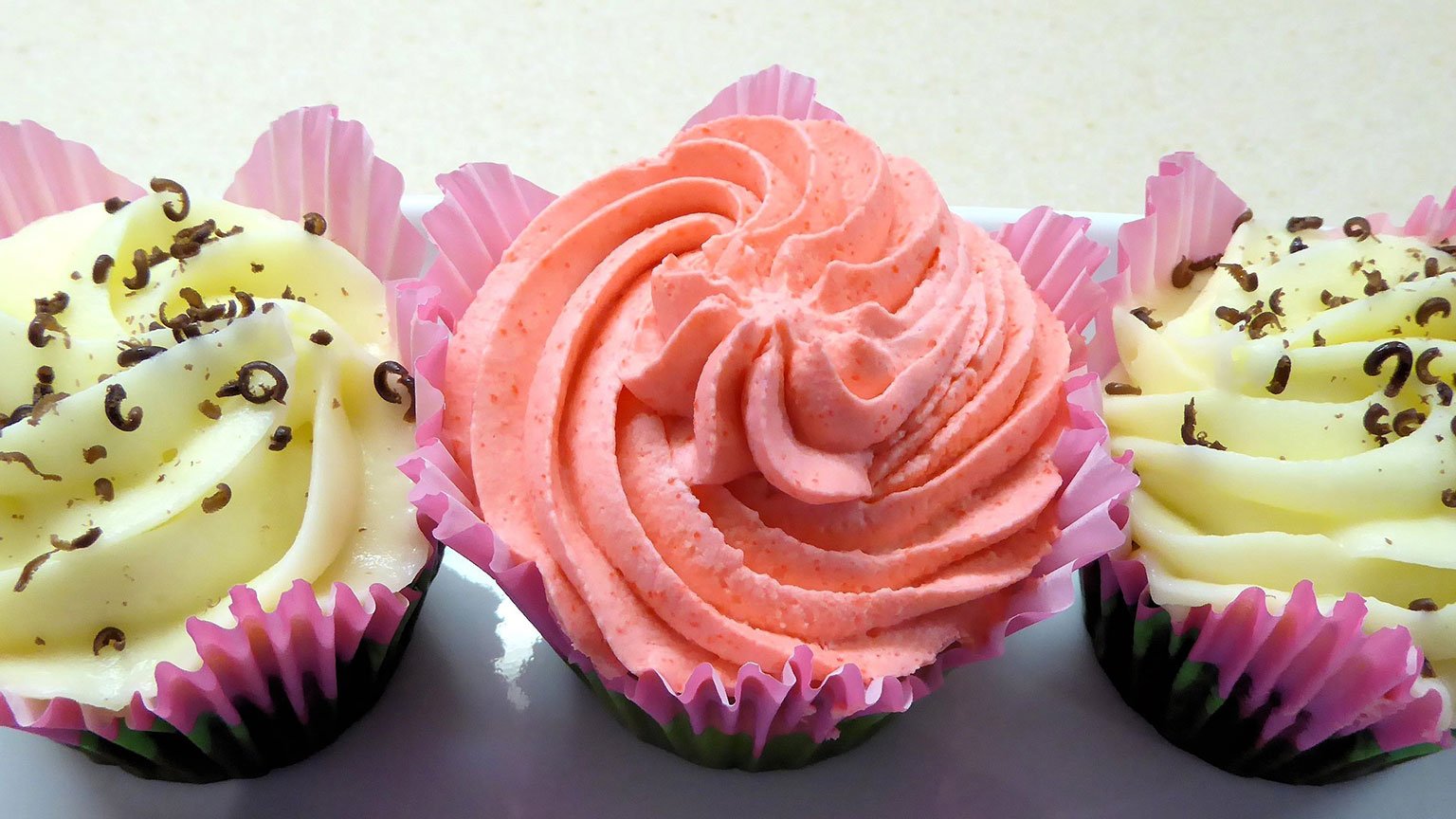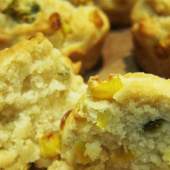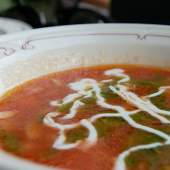Cupcakes

“Dream as if you’ll live forever; eat cupcakes as if you’ll die today.”
--Unknown
“Coffee makes it possible to get out of bed. Cupcakes make it worthwhile.”
--Unknown
Arguably, there are few things in life that can bring a smile to anyone’s face faster than a cupcake. Quick and easy to put together, as plain or fancy as you want to make them, relatively inexpensive (in most cases, at least – see below), popular with people of all ages, and perfect for any kind of celebration – what’s not to like? And while cupcakes might feel like a modern innovation, they’ve been around a lot longer than you might think.
The first reference to a “light cake to bake in small cups” appeared in 1796, in a tome called American Cookery written by one Amelia Simmons. The “cups” in question were probably ceramic or earthenware cups, used in the way we use ramekins today. The term “cupcake” first crops up in 1828, part of “Seventy-Five Receipts for Pastry, Cakes, and Sweetmeats” in a compendium titled Eliza Leslie’s Receipts. (“Receipts” evolved into “recipes,” in case you were wondering.)
At that time, there were two reasons why “cup” was part of the name; the first referred to the cups in which the cakes were baked, and the second indicated that its ingredients were measured, using a standard size cup, by volume. Later, these were called “1234 cakes” or “quarter cakes” because they were composed of four ingredients: one cup of butter, two cups of sugar, three cups of flour, and four eggs. (Pound cake was assembled similarly, but cupcakes incorporated fewer eggs and less butter, so they were much lighter and less caloric.)
The original cupcakes were more like muffins – they were not frosted, had additives such as spices, nuts, or dried fruits, and were probably consumed at breakfast. The first mass-produced cupcake did have frosting, after a fashion – these were made by Hostess 100 years ago, beginning in May 1919 (and no, there was no signature squiggly decoration or vanilla cream filling until 1950). At their inception, two Hostess cupcakes sold for five cents, and were an instant hit.
There is no consensus about who invented the uniquely shaped muffin/cupcake pan for home bakers, but once it arrived, for ease and convenience, paper liners soon followed. Later, there were versions made of foil, and more recently, reusable silicone. The foil and silicone cups are able to stand up on their own on a cookie sheet, so this is an easy way to make cupcakes without a muffin tin. (Duplicating the paper cups works as well.)
Cupcakes began to go gourmet early in the new millennium (possibly as a result of television reality shows focused on them and a memorable appearance on Sex and the City), and as demand increased, whole establishments were devoted to creating them in a wide variety of flavors and colors. One chain even devised a “Cupcake ATM” where patrons could indulge 24/7 – each machine can hold as many as 350 cupcakes at a stretch. (Hint: there is one in Chicago.)
A few fun cupcake facts:
- The largest cupcake ever made weighed in at 1,200 pounds and contained a whopping two million calories. The smallest? For National Cupcake Week, a British baker created a cupcake measuring 3 centimeters tall by 1.5 centimeters wide. Also on the plate: a magnifying glass.
- A contestant in a cupcake-eating contest set a record by eating 29 cupcakes in 30 seconds. (With an Alka Seltzer chaser, presumably.)
- Americans consume approximately 770,000,000 cupcakes each year. No word on the number of sprinkles on these, but it must be in the billions.
- Some of the more unusual cupcake varieties on offer in 2019 include maple-bacon, chai, apple pie, BLT (yes, really – it’s savory), and one made with Mountain Dew and Doritos. Most popular in the U.S.: red velvet, chocolate, vanilla, lemon, and pumpkin.
- Towers of cupcakes have become increasingly popular as a substitute for wedding cakes. The tiered “cupcake tree” is often a centerpiece on buffet tables, especially at bridal and baby showers.
- Across the pond in Great Britain, there is a variation on cupcakes are known as “fairy cakes” or “butterfly cakes.” The top is removed, cut into two pieces, and replaced to form “wings.” The whole thing is then coated with a shimmery glaze.
- In Australia, cupcakes are known as “patty cakes,” perhaps as a nod to the children’s nursery rhyme.
- In 2012, a baker in Dubai created “The Golden Phoenix,” billed as the world’s priciest cupcake. Decorated with edible 23-carat gold sheets and gold dust, this unique dessert set patrons back $1,000. It was served on a gold cake stand accompanied by chocolate-covered strawberries.
Of course, delicious cupcakes can be found anywhere, and there’s one for every taste (and for far less than $1,000, too). What’s your favorite? Whatever it is, have two. (They’re small.)





